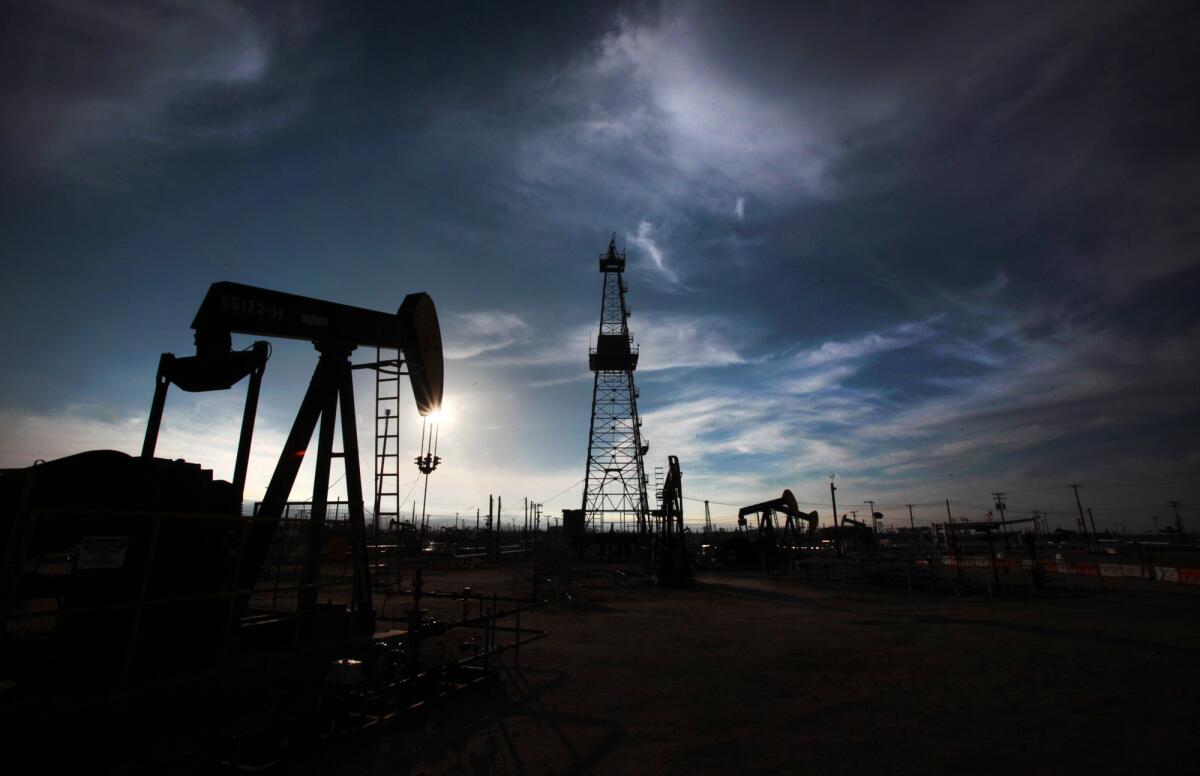Editorial: Amid a lack of fracking data, the state should halt new operations

- Share via
The wastewater from oil drilling, hydraulic fracturing and other extraction processes is supposed to be injected only into wells where the groundwater is already too toxic to be used for drinking or irrigation, even if heavily treated. But last year, the U.S. Environmental Protection Agency identified 10 California wells where that rule had been ignored.
Since then, the number of wells where wastewater was improperly injected has ballooned to 490, though 109 of them are no longer in use. That’s more than a fourth of all the wells — known as injection wells — currently used to dispose of industrial wastewater. It represents a tremendous failure by the state, which wrongly issued injection permits for wells in areas with protected groundwater.
A separate Times analysis of the wastewater produced by hydraulic fracturing, known as fracking, should increase Californians’ concerns about its potential for tainting usable water. On average, the “flowback fluid” from fracking operations contains levels of benzene about 700 times the levels considered safe for human use.
But how much of that has found its way into protected aquifers? Shockingly, no one knows. The state Division of Oil, Gas and Geothermal Resources does not know how much, if any, of the waste pumped into the improperly permitted wells was from fracking. Industries are required to report the amount and composition of the waste they inject into wells; the state should compile this information in a timely manner and make it readily available to the public.
Industry spokesmen point out that by and large, the protected wells drain into aquifers that already have significant levels of pollution; they downplay suggestions that this groundwater would be used for irrigation or drinking. No one should be buying that argument. The technology for treating water is continually improving, and the state’s drought has led to calls for using aquifers once considered too dirty to tap.
The resources division must move swiftly to close wells that were supposed to be protected, even those it believes the EPA may exempt in the future. If the EPA eventually agrees, the wells can be reopened. For now, conserving potentially useful water should be a top priority.
The division has vowed to overhaul its sloppy operations. Gov. Jerry Brown should appoint an independent overseer to make sure it does so quickly. This page has called previously for a moratorium on new fracking operations until the state has thoroughly studied their safety; that’s increasingly seeming like a wise idea.
Follow the Opinion section on Twitter @latimesopinion and Facebook
More to Read
A cure for the common opinion
Get thought-provoking perspectives with our weekly newsletter.
You may occasionally receive promotional content from the Los Angeles Times.









